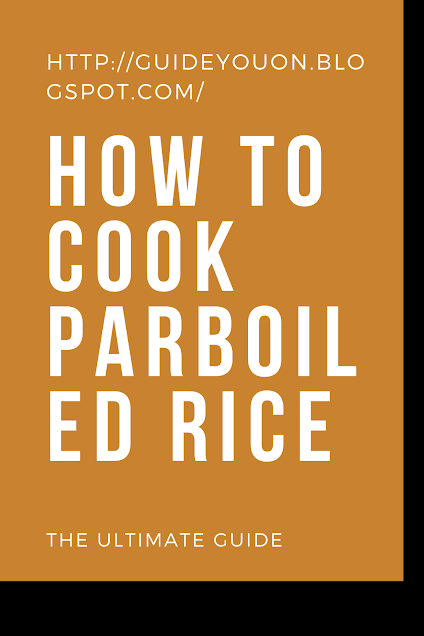What is the benefit of parboiled rice?
It is important to parboil the long grain rice to reduce the high amount of carbohydrates, due to the fact that white rice which is firm in nature contains up to 80 grams per 100 grams of carbohydrates cooked rice.
Parboiling rice involves pre-cooking the rice in water and rinsing it in cold water before the main cooking. This pre-cooking ensures that your Rice does not burn before it is done, thereby eliminating the cardboard taste associated with undone Rice.
How to Parboil Rice for Cooking White Rice
White rice here refers to rice cooked without any additional ingredient. Salt may be added and that's it. White rice is usually a staple eaten with some kind of sauce or stew.
To parboil rice for the purpose of preparing white rice, you want to boil it for a short period of time. You get the chance to add more water as you cook white rice because it will not burn. If you prefer to remove more carbohydrates, you may want to pre-cook it for much longer.
Follow these steps below to parboil the rice:
- Wash the rice in cold water (optional) and place in a pot.
- Add some water, about twice the level of the rice.
- Set on the stove and leave to cook.
- Note when the water starts boiling and leave to cook for more 5 minutes.
- Pour the contents of the pot in a sieve.
- Place the sieve (with the rice) in a bowl of cold water.
- Rince the rice and change the water if necessary.
- Leave in the sieve to drain off all the water.
- The rice is now ready to be cooked again.
How to Parboil Rice for Cooking Jollof Rice
Jollof rice refers to all types of rice cooked with added ingredients: oil, tomato stew, vegetables, coconut milk etc. This method is applicable to Jollof Rice, Coconut Rice, Mixed Vegetables Jollof Rice, Fried Rice, Rice and Beans, etc.
With these kinds of rice recipes, you do not have the leisure of adding more water as you cook the rice. Once the first dose of water dries and you try to add another, the rice will burn and become soggy. For this reason you want to parboil the rice you will use for any jollof rice recipe a bit more. This way, you ensure that after adding the ingredients, the rice will be cooked by the time the level dose of water dries.
How to parboil rice (jollof rice recipes):
- Wash the rice in cold water (optional) and place in a pot.
- Add some water, about 4 times the level of the rice.
- Set on the stove and leave to cook.
- Pour the contents of the pot in a sieve.
- Cool down the rice rapidly by dipping the sieve in cold water, changing water often till the rice is cold.
- Leave in the sieve to drain off all the water.
- The rice is now ready to be cooked again.
With experience, you will be more confident in determining the best time.








0 Comments